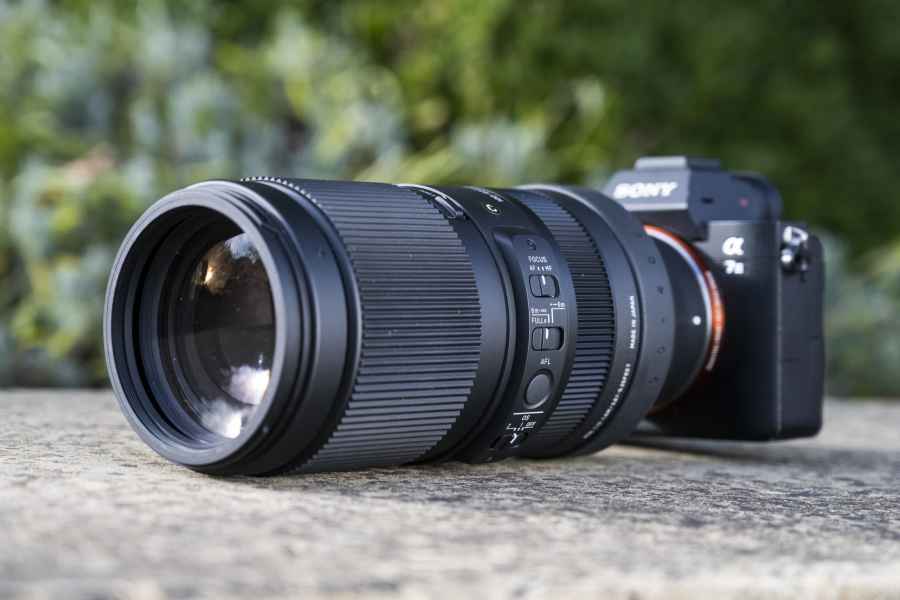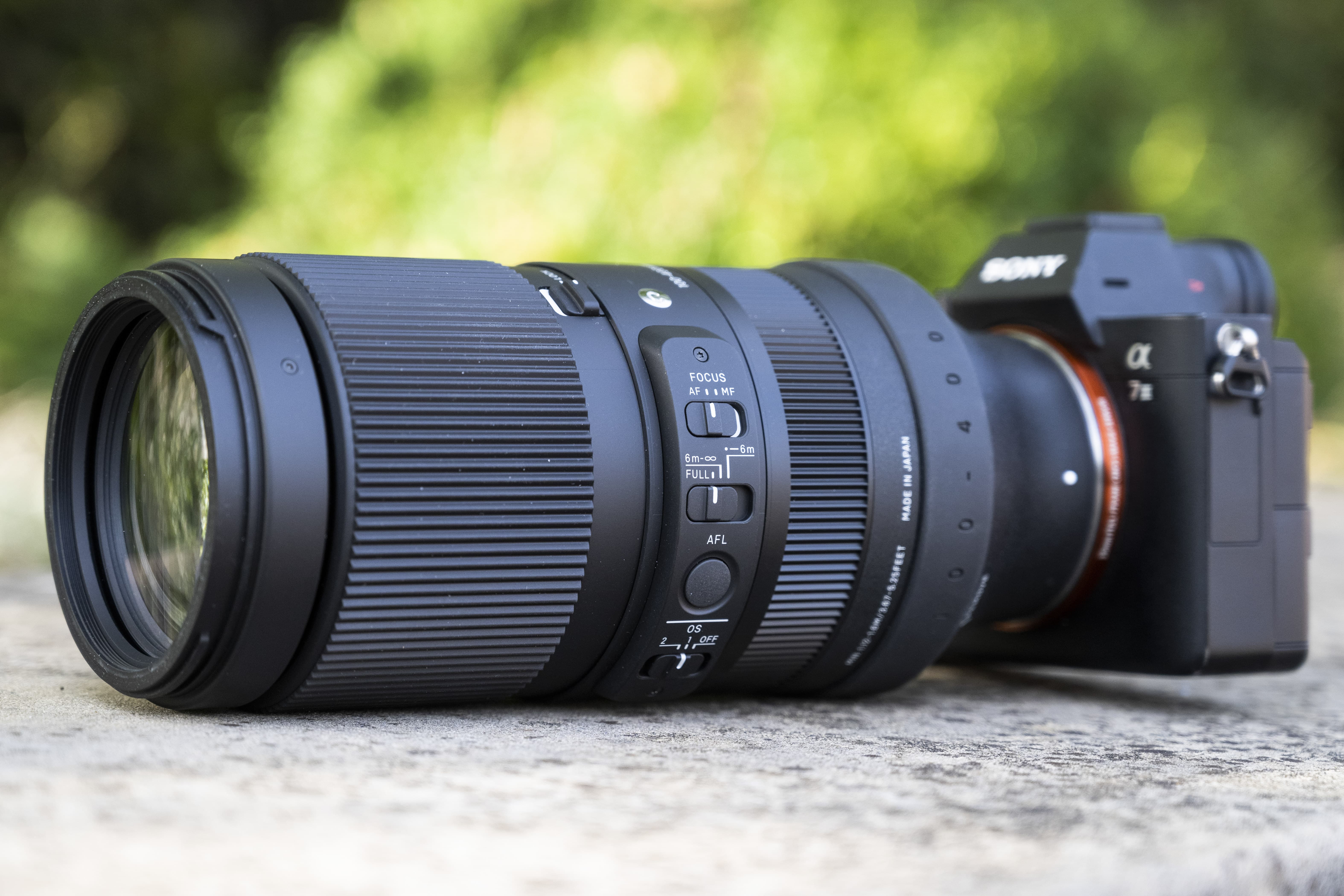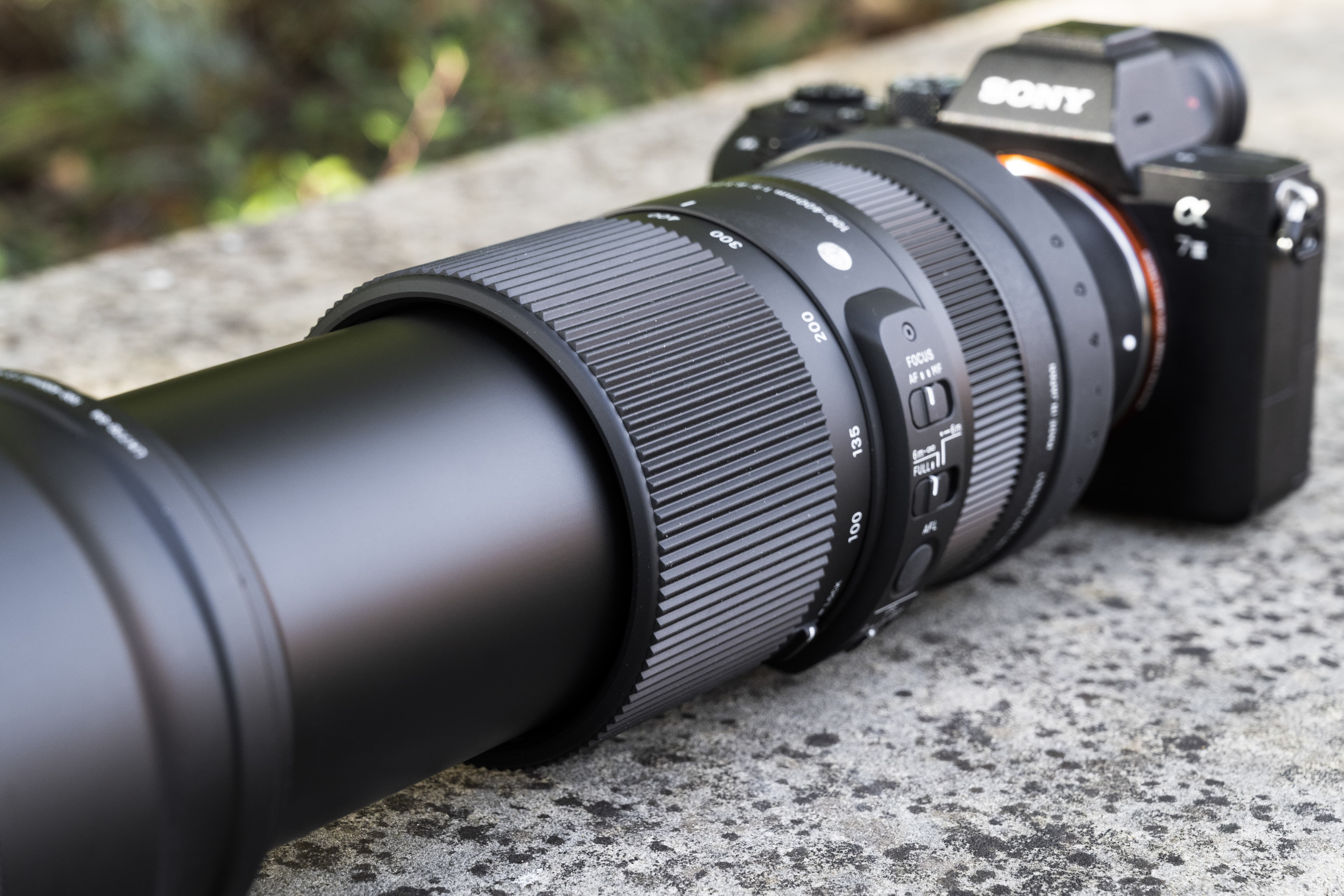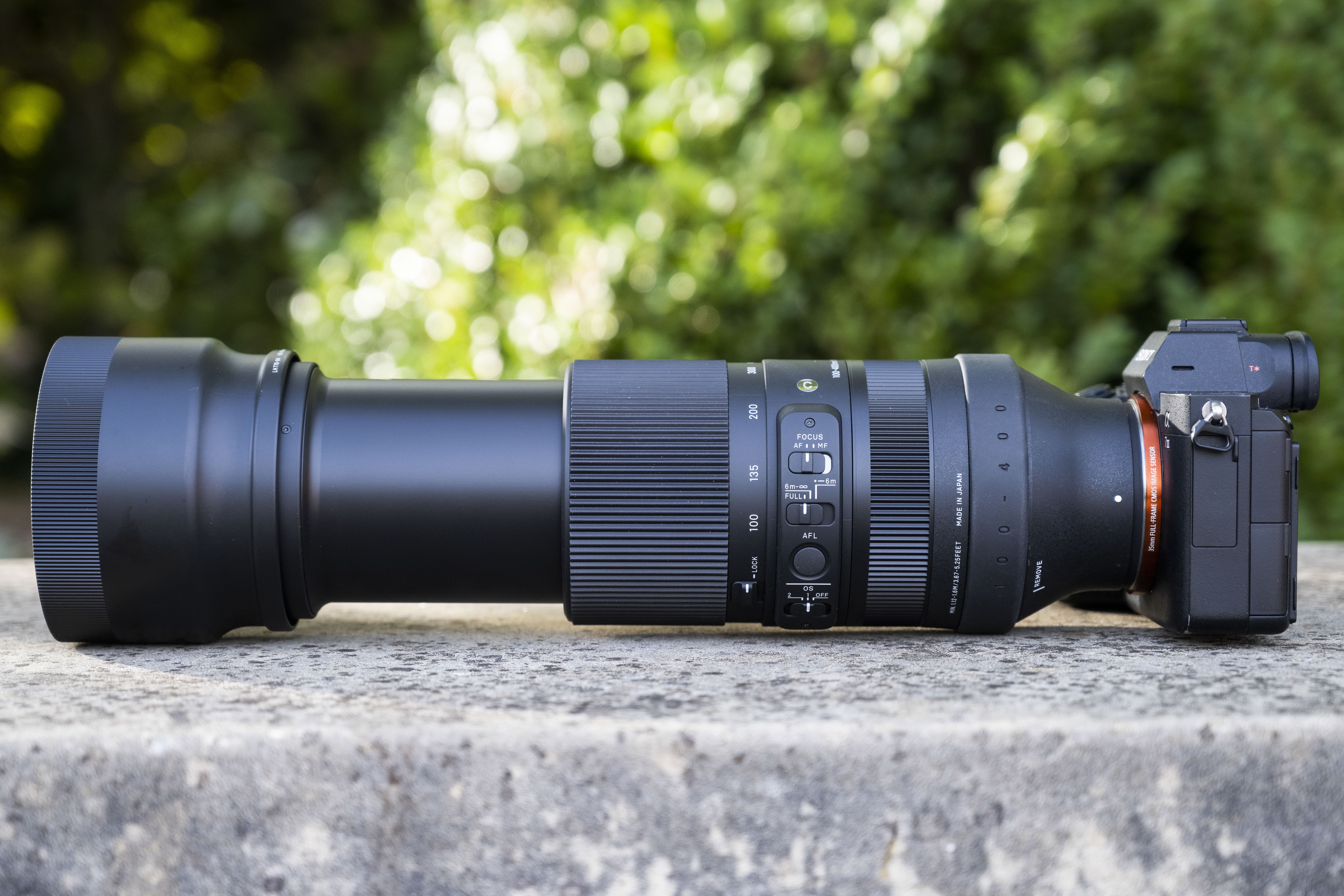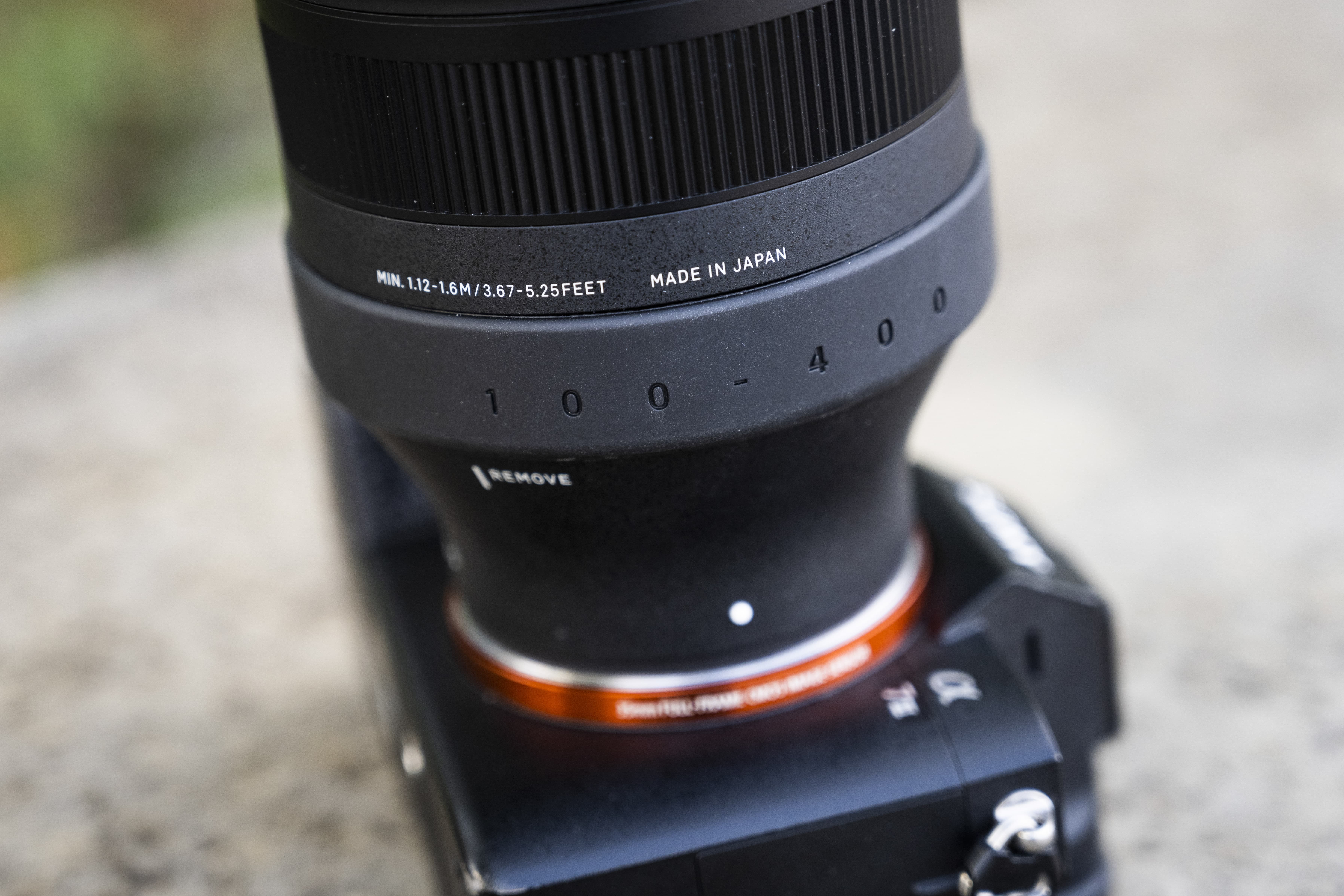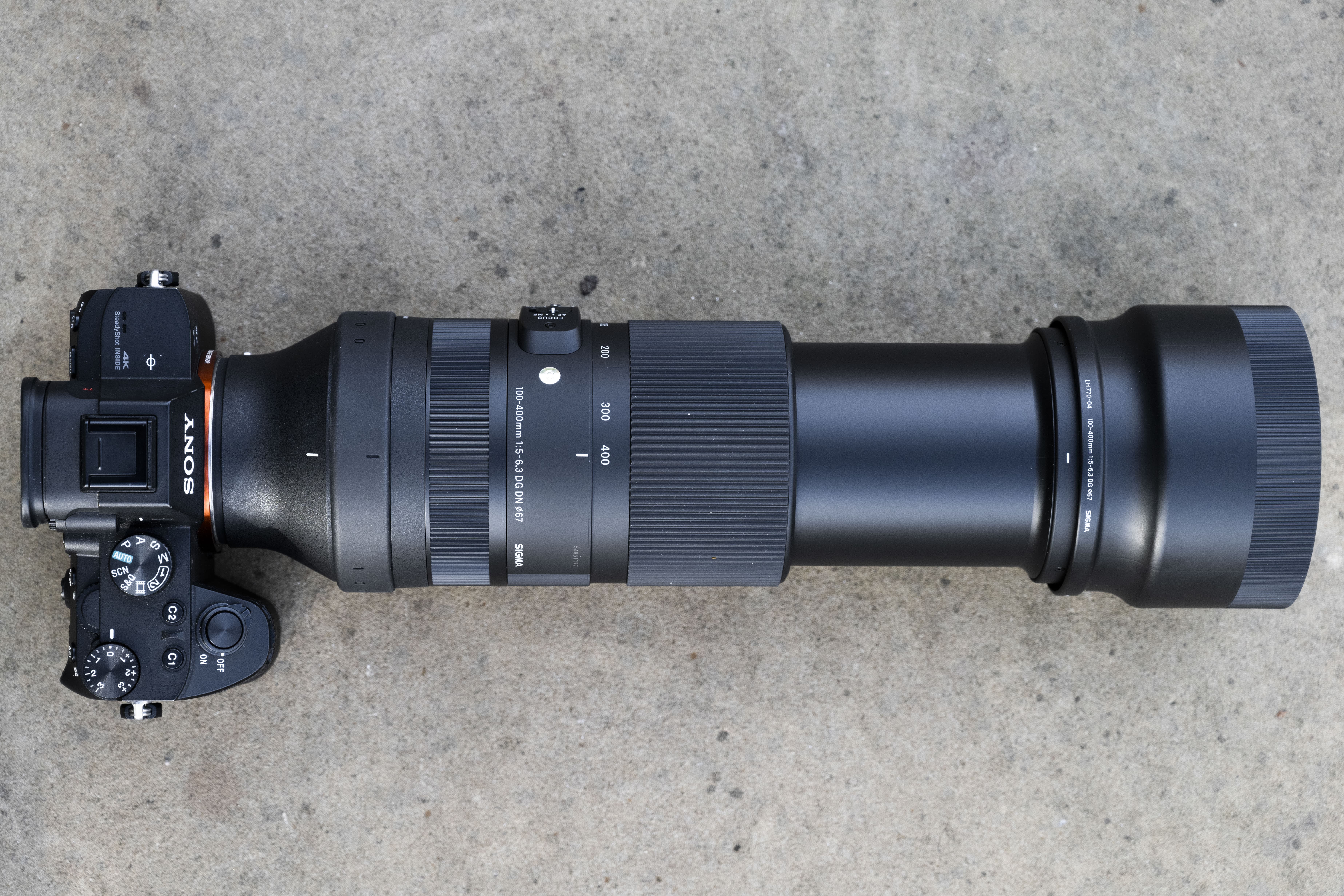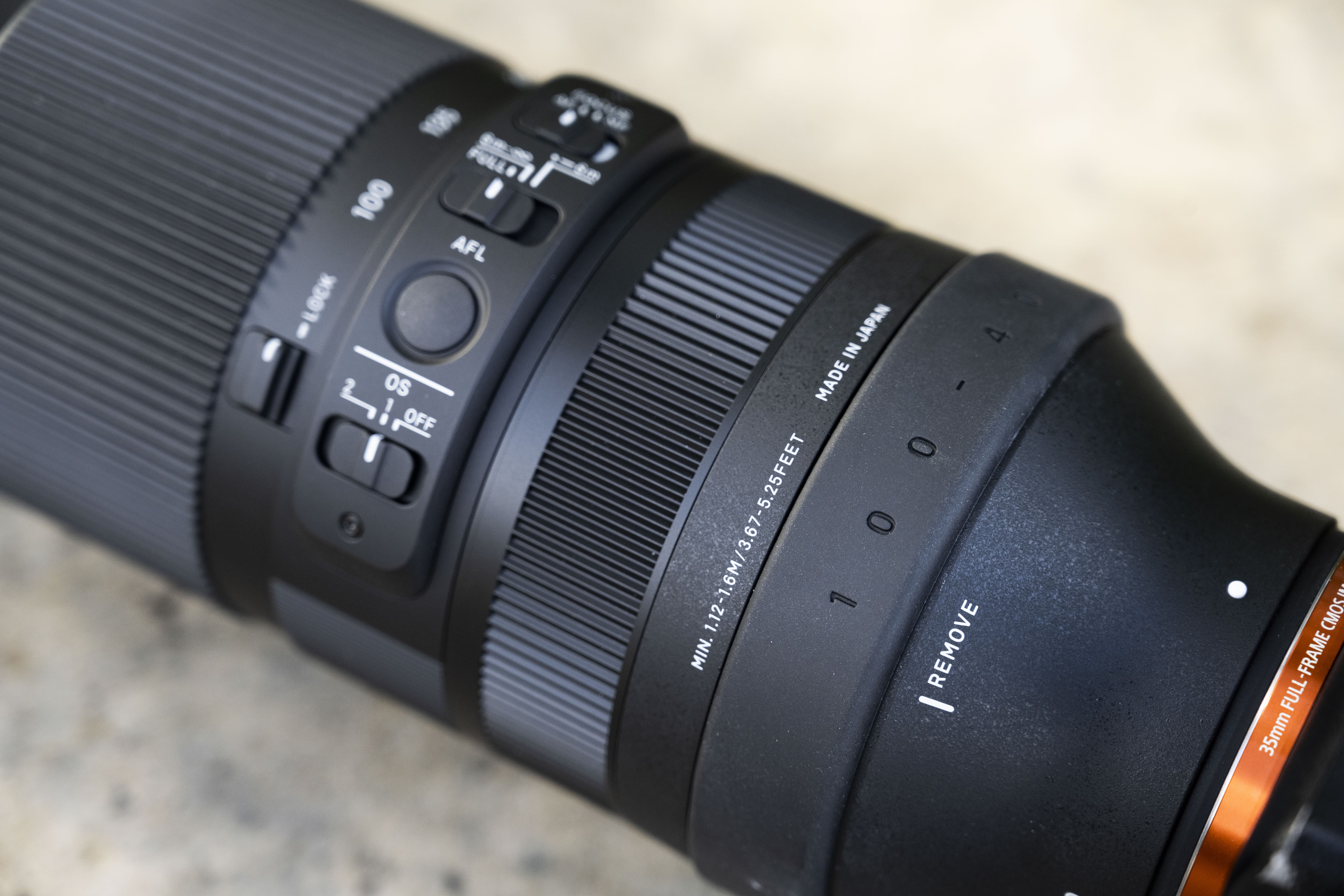When Sigma revealed it was going to develop a series of lenses for full-frame mirrorless cameras that use the E-mount and L-mount, many photographers were eager to know what might follow. The first lenses to receive the new DG DN identity were the 45mm F2.8 DG DN, 14-24mm F2.8 DG DN Art and 35mm F1.2 DG DN Art, which were later followed by the 24-70mm F2.8 DG DN Art. The fifth lens to arrive was the Sigma 100-400mm F5-6.3 DG DN Contemporary – a zoom that looks set to have mass market appeal with those seeking an affordable telephoto for less than £1000.
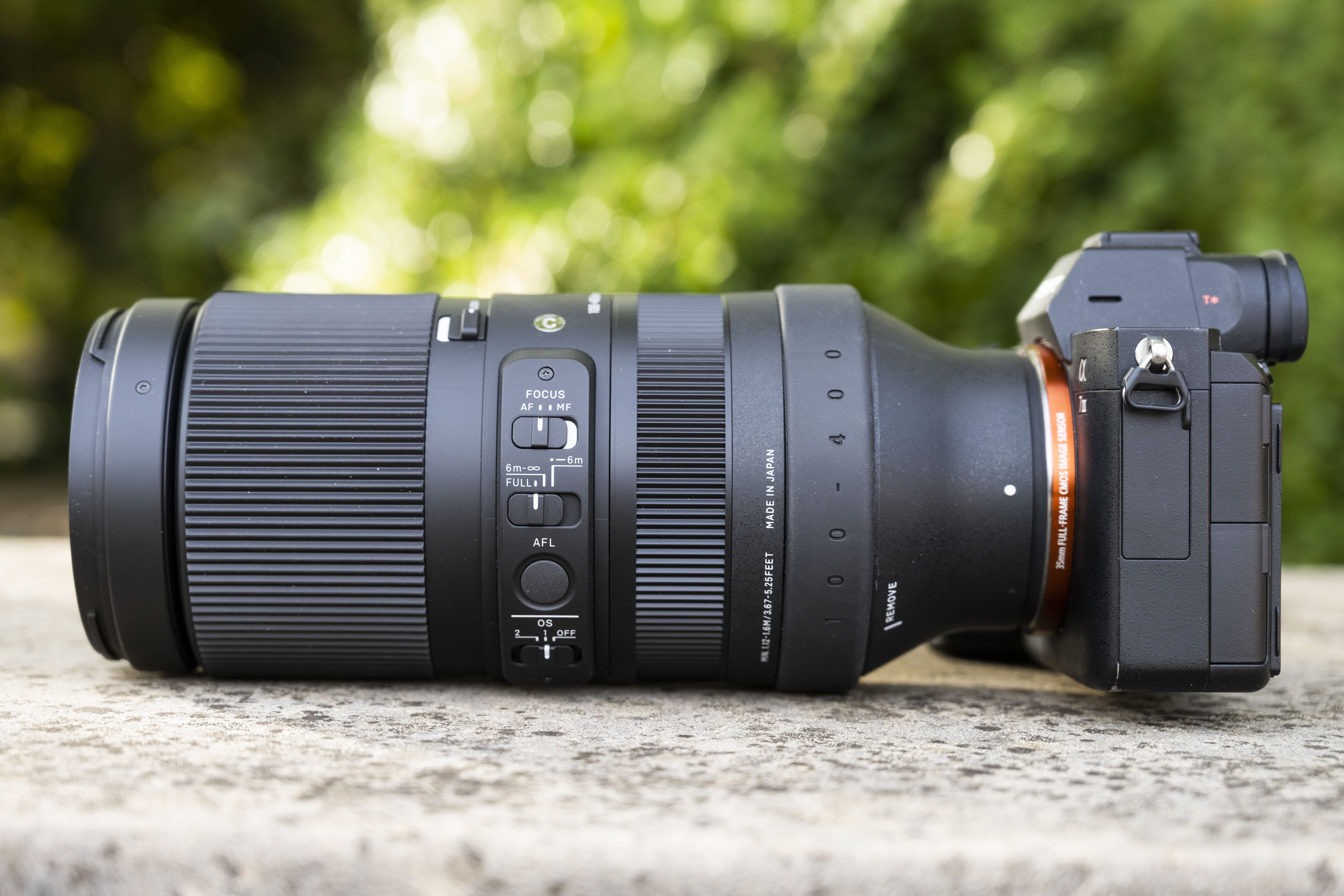
Although the lens looks quite long in this side-on view, it’s a relatively compact example of a full-frame 100-400mm telephoto zoom
Like other lenses that slot into Sigma’s Contemporary lineup, we’re looking at a zoom that’s competitively priced, promises an excellent optical performance and remains highly portable. The number of lenses in E-mount and L-mount that manage to achieve this across a 100-400mm focal range are currently few and far between. There’s the Sony FE 100-400mm f4.5-5.6 OSS G Master in E-mount, but at £2,229 it’ll set you back £1400 more, which is a lot.
Sigma could be onto a winner with their new zoom and the time has come to find out if it’s everything we’ve hoped for.
Sigma 100-400mm F5-6.3 DG DN OS Contemporary: Features
The lens shares a close resemblance with Sigma’s 100-400mm F5-6.3 DG OS HSM for DSLRs in terms of appearance, but is different in the way its been designed from the ground up for full-frame mirrorless cameras that feature a short flange back distance.
The optical design is different to the DG version and features 22 elements in 16 groups. Four of these are special low-dispersion (SLD) glass elements and one is the ‘F’ low-dispersion (FLD) type, which promises a low refractive index and characteristics that provide excellent contrast as well as correction for residual chromatic aberration.
Complementing the construction are 9 rounded diaphragm blades, but with a variable maximum aperture of f/5-6.3 users will find themselves wanting to use the lens at its long end to accentuate shallow depth of field.
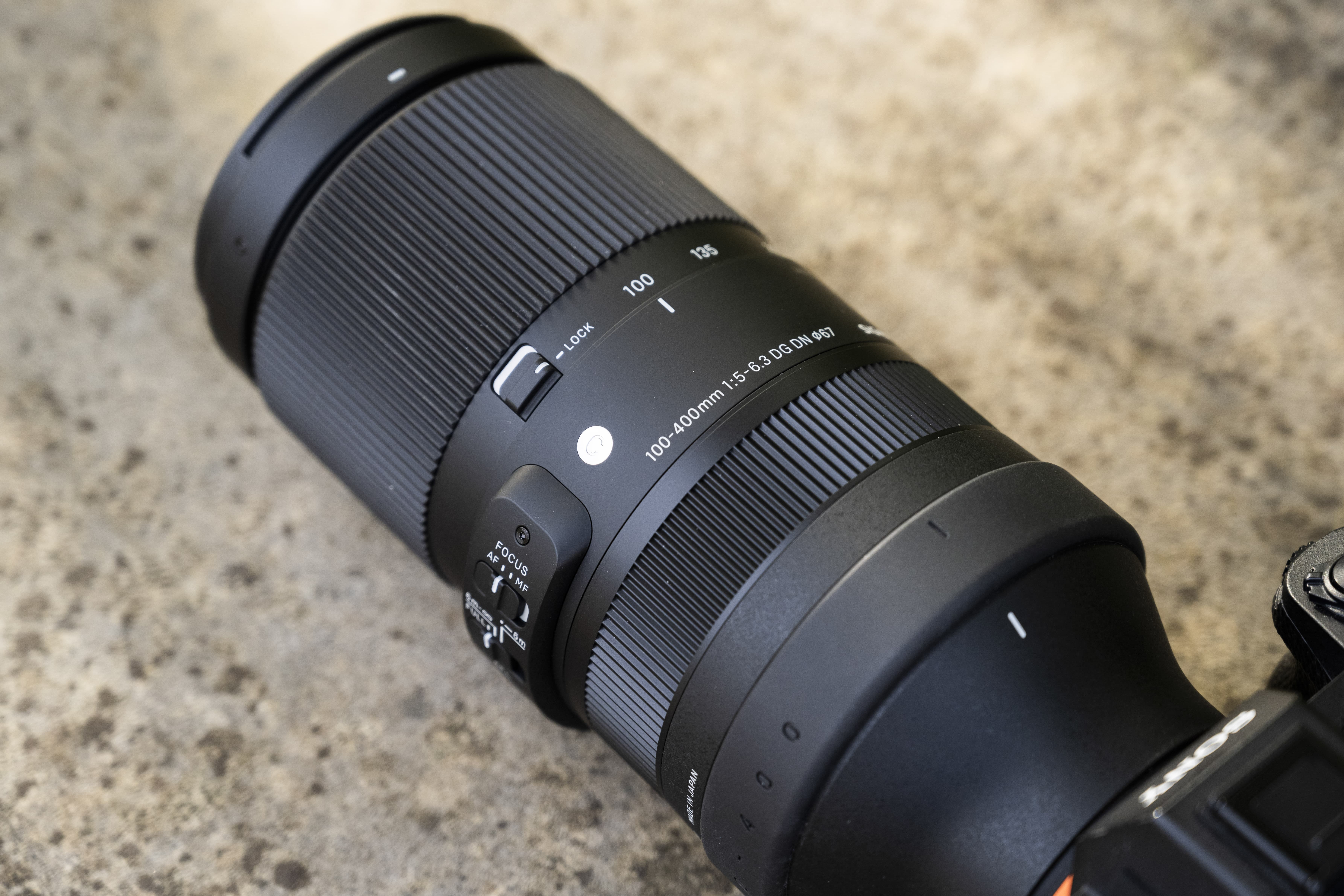
In this view the zoom lock has been engaged to prevent zoom creep – note the white background behind the zoom lock switch, which gives a visual clue that it’s in the locked position
As we’ve seen on other Sigma DG DN lenses, a stepping motor is implemented to drive autofocus and provide fast, smooth and silent operation. An autofocus lock (AFL) button is added to the barrel to which users can assign different functions from the camera, plus there’s a focus limit switch that allows users to control the focus distance range based on how close or far they are working from their subject.
The optical stabilisation (OS) that’s built into the lens is effective to four stops on its own. The great thing about having OS built-in is that it offers compensation with older mirrorless models that don’t feature in-body image stabilisation (IBIS) as well as those that do.
When it’s paired with cameras that feature 5-axis image stabilisation the lens corrects for pitch and yaw with rotation around the lens axis and side-to-side movement being controlled by the camera. At the side of the barrel there are two stabiliser modes with the option to turn it off when needed. Mode 1 is intended for stationary subjects, whereas mode 2 detects sweeping movements when panning and switches the IS correction off in the relevant direction to help deliver sharper results.
The Sigma 100-400mm F5-6.3 DG DN OS Contemporary has a 67mm filter thread at the front ready for the attachment of filters. Sigma’s TC-1411 and TC-2011 teleconverters, which are exclusively designed for the L mount version can also be used to extend the focal length up to 800mm.
Elsewhere, it features a brass metal mount and is compatible with Sigma’s USB dock UD-11 that allows users to adjust the throw of the focus ring for precise manual focus control. Just like Sigma’s teleconverters though, this USB dock is only available for the L mount version of the lens.
Sigma 100-400mm F5-6.3 DG DN OS Contemporary: Build quality
Full-frame lenses that cover a focal length of 100-400mm are often associated with being heavy and unwieldy, but that’s not the case with the Sigma 100-400mm F5-6.3 DG DN OS Contemporary, which is moderately compact by telephoto zoom standards. The E-mount review sample I was supplied with weighs 1,140g, which presents a weight saving of 255g over Sony’s FE 100-400mm f4.5-5.6 OSS G Master.
The fit and finish of the lens is excellent with careful consideration to what materials are used where. The zoom ring is nicely rubberised and magnesium alloy is used around the tripod socket attachment to ensure this section of the lens is as strong as it needs to be.
To help keep the weight down some parts of the barrel are made from polycarbonate, but these sections uphold good quality. Carrying my camera setup over my shoulder on some long walks highlighted the zoom has a tendency to creep, however Sigma has added a zoom lock that can be engaged at 100mm to prevent this being a nagging concern.

The arrangement of switches between the zoom ring and manual focus ring. The focus limit switch is positioned below the AF/MF switch and the AFL button is rubberised
The spacing and difference in feel between the zoom ring and focus ring is such that you can easily tell the two apart. The former operates across its range with quarter turn and Sigma has designed the lens hood to facilitate operating the zoom by the push/pull method if you’d prefer. Using the zoom this way is ideal for quick transitions in focal length, but required slightly more effort to extend it between 300-400mm than at the wider end.
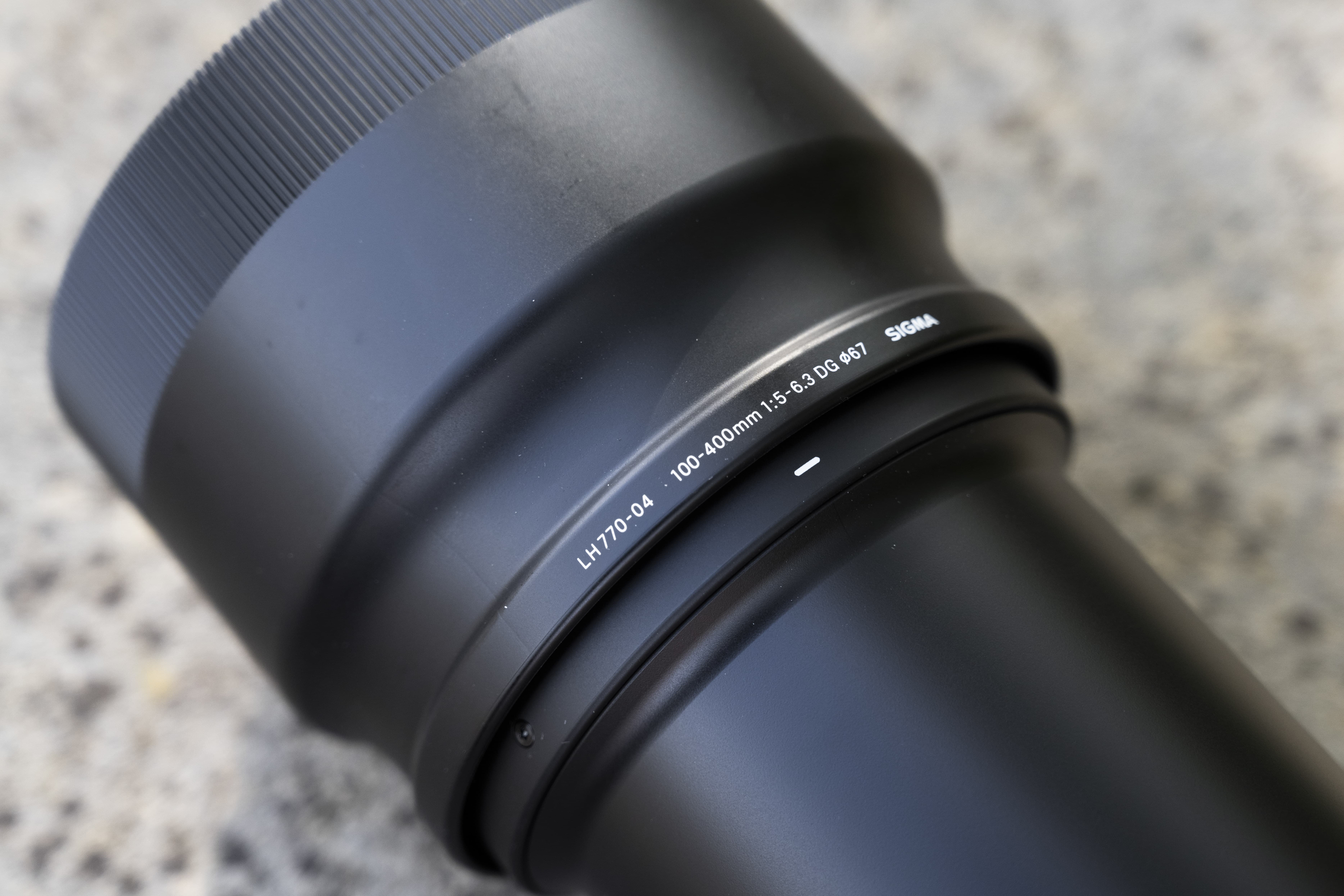
A closeup showing the profile of the hood that allows users to operate it as a push/pull zoom lens
Though it’s not a weather-sealed zoom, Sigma has gone to the effort of adding a dust-and splash-proof seal around the mount and a water-and oil-repellent coating to the front element. Photographers who’d like to support their camera setup via the lens won’t be able to straight out of the box. The rubber ring behind the focus ring can be removed though and an optional TS-111 tripod socket (£139) can be attached.

The rubber ring behind the manual focus ring is removed and the optional TS-111 tripod socket has been attached. This allows the camera to be supported via the lens on a tripod or monopod
It won’t be necessary for those who take a majority of their images handheld, but for those who’d like to support the lens on a tripod or monopod it’s good to know a tripod socket is available.
Sigma 100-400mm F5-6.3 DG DN OS Contemporary: Autofocus
All the switches operate positively with a reassuring click and the auto focus lock (AFL) button that’s located between the focus limit and optical stabilisation switches is perfectly placed for control with your thumb when the lens is supported in your left hand. A high number of my test shots were taken using autofocus via the AFL button, but when I did experiment with manual focus the focus ring offered precise adjustment when rotated slowly.
Focus performance is smooth and virtually silent, with subtle operational whirring only noticeable when the lens was held directly to my ear. The speed of focusing is immediate throughout the zoom range under bright lighting conditions. Signs of the lens hunting for focus were only detected in dark conditions and even then it rarely failed to misjudge accurate focus with the Sony A7 III it was paired with. I was also impressed by how well the lens performed with Sony’s human and animal subject detection modes.
Sigma 100-400mm F5-6.3 DG DN OS Contemporary: Image quality
Photographing the same scene across the zoom range at different aperture settings before inspecting my results methodically revealed the lens returns its sharpest results towards the middle of its zoom range between 150-300mm.
The level of sharpness that’s resolved at maximum telephoto (400mm) is remarkably impressive for a zoom so compact, with optimum edge-to-edge sharpness at this focal length being identified at f/8. Corner sharpness never reaches the same level of sharpness as that in the centre at any point in the zoom range, yet remains respectable.
To return the sharpest results possible users will ideally want to use the lens between f/5.6 and f/11, with diffraction taking the edge off sharpness at f/16 up to its minimum variable aperture of f/22-f/29. As a side note, the lens can be used at f/5 between 100-115mm and at f/5.6 up to 235mm. Beyond this point the maximum aperture is limited to f/6.3 up to 400mm.
Vignetting is exhibited when it’s used wide open, as is pincushion distortion throughout its zoom range. The good news is that both are a one-click fix in the latest versions of Adobe Camera Raw and Lightroom that support the correct lens profile. The lens profile does a great job of correcting these optical deficiencies and individual profiles are also available for those who use the L-mount version with teleconverters.
I was impressed by the way the lens handles flare and it manages to uphold high contrast when shooting directly towards the light. Some purple and green fringes of colour were observed along high-contrast edges at high magnification, but the excellent defringe eyedropper tool in Camera Raw v12.4 was used to remove this effectively.
Sigma 100-400mm F5-6.3 DG DN OS Contemporary: Verdict
Sigma has always been quick to acknowledge gaps in the market and release lenses where there’s a shortage or a need. Before the release of this zoom there weren’t many full-frame lenses to choose from covering the popular 100-400mm focal length in E-mount or L mount so it’s always welcome to see a third-party manufacturer like Sigma stepping up and delivering an exceptional example.
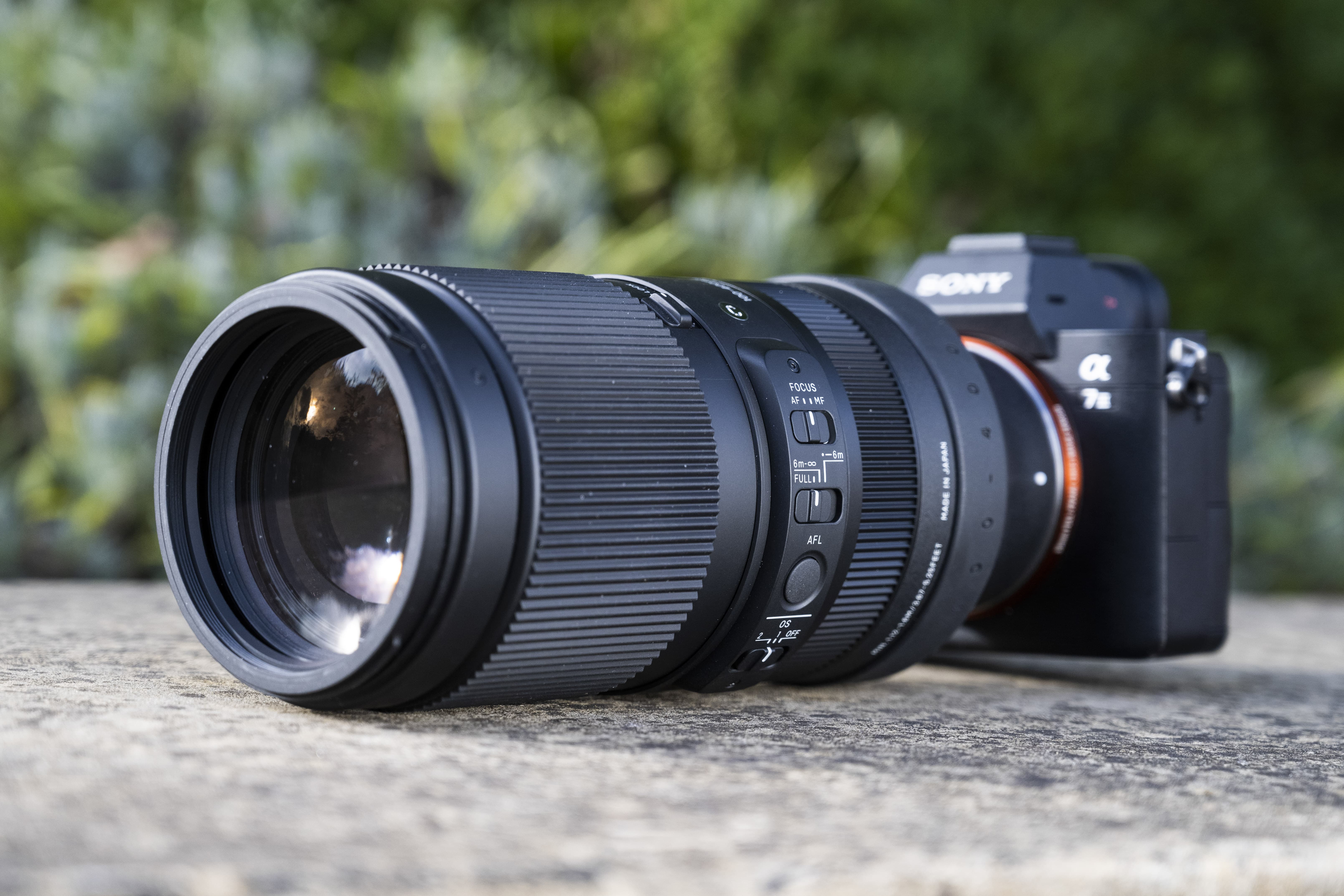
The Sigma 100-400mm F5-6.3 DG DN OS Contemporary will be popular with users of E-mount and L-mount full-frame mirrorless cameras
There’s a lot to like about the lens. Although it does force you to push the sensitivity fractionally higher than you would on a telephoto zoom with a faster variable maximum aperture of f/4.5-5.6 when subjected to demanding low-light conditions, you get a reasonably compact lens in return that doesn’t upset the balance of a full-frame mirrorless camera or feel too heavy when it’s carried over the shoulder for hours on end.
It backs up its excellent portability with stunning contrast and sharpness that exceeded my expectations and then some. There’s also its optical stabilisation to factor in, which when combined with a mirrorless camera with 5-axis in-body image stabilisation lets you shoot tack sharp handheld shots at 400mm with shutter speeds as slow as 1/15sec.

Sigma has struck the balance between features, handling, image quality and price just right on their fifth DG DN lens for full-frame mirrorless cameras
The lack of teleconverter and USB dock support for E-mount versions will dishearten a few Sony users and it would have been good to see Sigma offer an incentive whereby the optional TS-111 tripod socket could be bought for less when purchased with the lens than when bought separately. This doesn’t take much away from what is a sublime telephoto lens though and one that represents extremely good value at £899.

Find more options in our guide to the best Sony E-Mount lenses.
Follow AP on Facebook, Twitter, Instagram, YouTube and TikTok.

